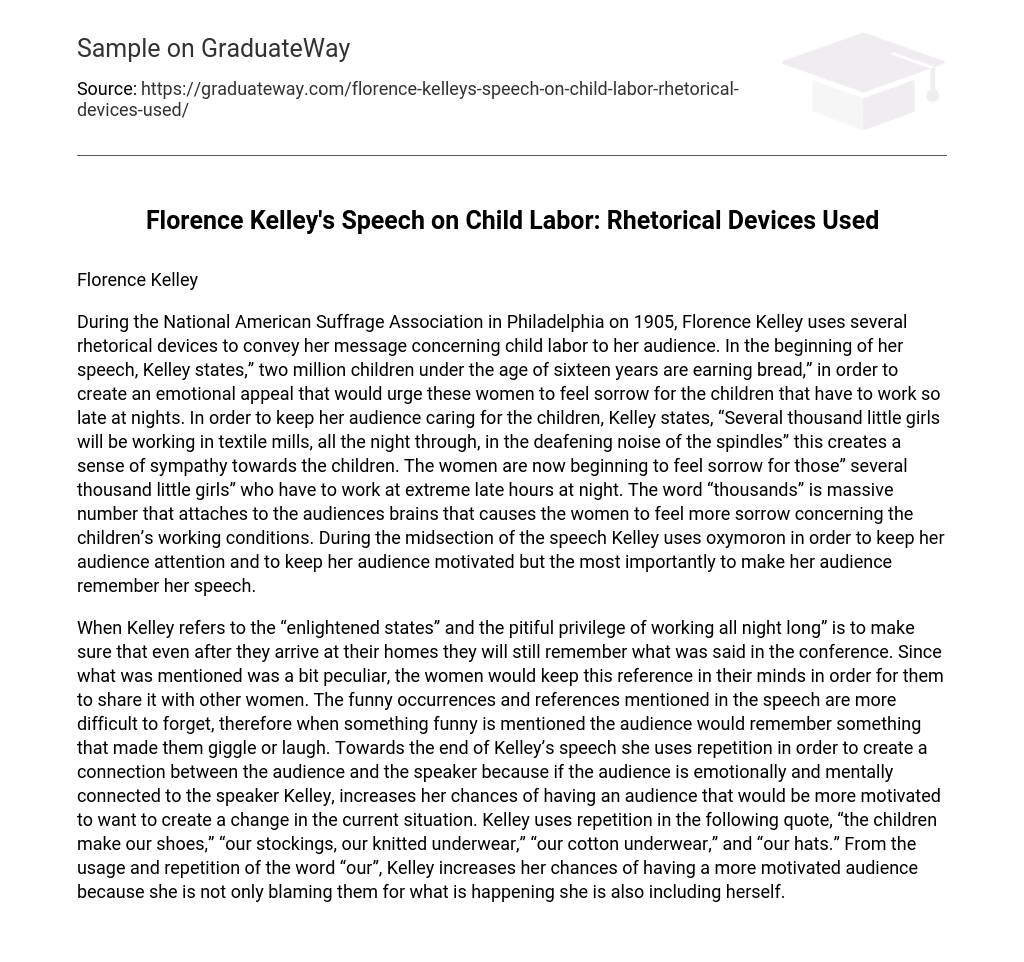Florence Kelley
During the National American Suffrage Association in Philadelphia in 1905, Florence Kelley utilizes various rhetorical devices to communicate her message about child labor to her audience. To evoke an emotional response from these women, Kelley starts her speech by stating that “two million children under the age of sixteen years are earning bread,” highlighting the plight of children who have to work late at night. Additionally, she emphasizes the challenges faced by “Several thousand little girls” who are forced to work in textile mills throughout the night, surrounded by deafening noise from spindles. This evokes sympathy from the women, who now empathize with these young girls’ difficult working conditions. By using the word “thousands,” Kelley impresses upon her audience the enormity of the problem and intensifies their sorrow. Moving forward, in the middle of her speech, Kelley employs oxymoron to maintain her audience’s attention, motivation, and most importantly, to ensure that her speech remains memorable to them.
Kelley employs the notion of “enlightened states” and the unenviable privilege of toiling throughout the night to ensure that even after returning home, attendees will retain the conference’s messages. By addressing something peculiar, she strives for the women to hold onto this reference and share it with others. The humorous incidents and allusions discussed are particularly memorable; whenever something funny arises, the audience recalls fond moments that elicited chuckles or laughter. Towards the conclusion of her speech, Kelley fosters a connection between herself and her audience through repetition, aiming to emotionally and intellectually engage the listeners. This approach enhances Kelley’s chances of inspiring a motivated audience eager to effect change in the present circumstances. Kelley utilizes repetition effectively in the following statement: “the children make our shoes,” “our stockings, our knitted underwear,” “our cotton underwear,” and “our hats.” By repeatedly employing the word “our,” Kelley not only assigns blame but also includes herself, further fostering audience motivation.





